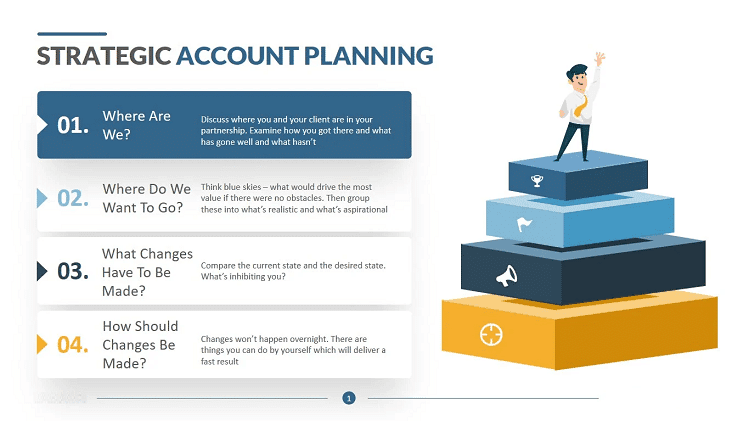Strategic Account Planning: A Definitive Guide

The business landscape is evolving swiftly, and companies are increasingly recognizing the value of nurturing key relationships. Strategic account planning plays a crucial role in this dynamic, ensuring lucrative partnerships and sustained growth. It is a comprehensive process that involves identifying high-value customers and devising tailor-made strategies to maintain and expand those relationships. Understanding its significance can be the difference between merely surviving and thriving in today’s competitive market. Below, we delve into the complexities of strategic account planning and its undeniable influence on business success.
Understanding Strategic Account Planning and Its Importance
At its core, strategic account planning is about forging strong, lasting connections with clients by understanding their needs at a profound level. It’s a methodical approach that aligns a company’s offerings with the customer’s long-term goals and objectives. This alignment is not a one-off task but a continuous process that demands attention and recalibration over time to keep up with changing market dynamics.
The importance of strategic account planning becomes evident when one considers its impact on customer retention and expansion. Through detailed account analysis, businesses can anticipate customer needs, shape bespoke solutions, and establish themselves as indispensable partners. This transforms relationships from purely transactional to strategic partnerships.
An effective strategic account plan doesn’t merely focus on immediate revenue, but rather on sustainable growth. Setting the stage for upsell and cross-sell opportunities allows businesses to maximize the lifetime value of a customer, which in turn drives long-term profitability.
The Role of Data Analysis in Strategic Account Planning
Alt text: Employees incorporating data analysis into a strategic account plan to allocate time and resources efficiently.
The infusion of data analysis into strategic account planning elevates its potential exponentially. By leveraging data, businesses can gain insights that are otherwise obscure, uncovering deep customer trends and preferences. This empowers decision-makers to base their strategies on facts rather than intuition, leading to more effective planning and deployment of resources.
Data analysis helps companies identify which accounts are contributing most to their bottom line, allowing them to allocate time and resources efficiently. This surgical approach ensures that efforts are concentrated on the accounts with the highest potential for growth and profitability.
In our digital age, clients leave a vast trail of data—from transaction histories to social media interactions. By analyzing this data, businesses can uncover opportunities for innovation and personalization, two factors that can significantly differentiate their offering in competitive markets.
Implementing the Strategic Account Plan: A Step-By-Step Approach
Alt text: Business leader explaining how a strategic account plan allows the efficient navigation of complex sales cycles.
Implementation is where many strategic account plans either take flight or fall flat. The first step is securing buy-in from all stakeholders, ensuring that everyone understands and is committed to the shared vision of the plan. This alignment of interests is critical for maintaining a unified approach when engaging with the client.
Next, companies must operationalize the plan by integrating it into daily workflows. This means equipping sales and account management teams with the necessary tools, information, and authority to act on the plan’s directives. Doing so transforms the strategic account plan from a document into action.
Communication is a cornerstone of effective implementation. Regularly sharing progress, challenges, and learnings with internal teams and the client ensures transparency and fosters a collaborative atmosphere. It also paves the way for timely adjustments in response to feedback or changes in the business environment.
Measuring Success and Adapting the Strategic Account Plan Over Time
Having a plan is just the start; measuring its success is what demonstrates its value. Key performance indicators (KPIs) should be established from the outset, allowing companies to track results against objectives. These benchmarks inform whether the current course should be maintained or altered.
Customer feedback is an invaluable metric for measuring success. Their level of satisfaction and willingness to grow the partnership are direct reflections of the plan’s effectiveness. Actively seeking and incorporating their insights keeps the plan aligned with the client’s evolving aspirations.
Altogether, strategic account planning is not merely a task to be completed; it’s a critical business philosophy that shapes the approach to customer engagement and long-term growth. Its meticulous implementation and consistent evaluation are what carve the pathway to enduring partnerships and sustainable success.




